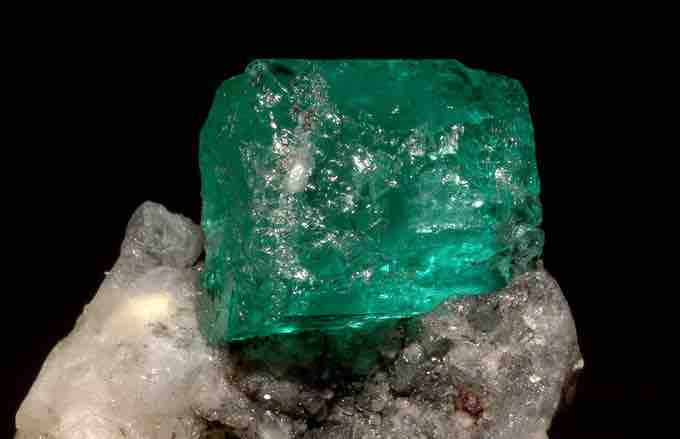Properties of Alkaline Earth Metals
The alkaline earth metals (beryllium (Be), magnesium (Mg), calcium (Ca), strontium (Sr), barium (Ba), and radium (Ra)) are a group of chemical elements in the s-block of the periodic table with very similar properties:
- shiny
- silvery-white
- somewhat reactive metals at standard temperature and pressure
- readily lose their two outermost electrons to form cations with a 2+ charge
- low densities
- low melting points
- low boiling points
The alkaline earth metals comprise the group 2 elements. All the discovered alkaline earth metals occur in nature.
Reactions of Alkaline Earth Metals
All the alkaline earth metals have two electrons in their valence shell, so they lose two electrons to form cations with a 2+ charge. Most of the chemistry has been observed only for the first five members of the group; the chemistry of radium is not well established due to its radioactivity.
In chemical terms, all of the alkaline metals react with the halogens to form ionic alkaline earth metal halides. All the alkaline earth metals except beryllium also react with water to form strongly alkaline hydroxides which should be handled with great care. The heavier alkaline earth metals react more vigorously than the lighter ones.
The alkaline metals have the second-lowest first ionization energies in their respective periods of the periodic table. This is due to their low effective nuclear charges and the ability to attain a full outer shell configuration by losing just two electrons. The second ionization energy of all of the alkaline metals is also somewhat low.
Beryllium is an exception. It does not react with water or steam, and its halides are covalent. All compounds that include beryllium have a covalent bond. Even beryllium fluoride, which is the most ionic beryllium compound, has a low melting point and a low electrical conductivity when melted.
Here is the list of some of the common reactions of alkaline earth metals, where E = elements that act as reducing agents:
- The metals reduce halogens to form ionic halides:
$E_{ (s) }+X_{ 2 }\rightarrow EX_{ 2(s) }$ where X = F, Cl, Br or I - The metals reduce O2 to form the oxides:
- The larger metals react with water to produce hydrogen gas:
$E_{ (s) }+2H_{ 2 }O_{ (l) }\rightarrow E_{ (aq) }^{ 2+ }+2OH_{ (aq) }^{ - }+H_{ 2(g) }$ where E = Ca, Sr or Ba - The metals undergo transmetallation reactions to exchange ligands:
$Ae+Hg{ \{ N(SiMe_{ 3 })_{ 2 }\} _{ 2 } }\rightarrow [Ae\{ { N(SiMe_{ 3 })_{ 2 }\} _{ 2 } }(THF)_{ 2 }]$ where Ae = Ca, Sr, or Ba.
Alkaline Earth Metal Compounds
- Alkylmagnesium halides (RMgX where R = hydrocarbon group and X = halogen) are used to synthetise organic compounds. Here's an example:
$3RMgCl+SnCl_{ 4 }\rightarrow 3MgCl_{ 2 }+R_{ 3 }SnCl$ - Magnesium oxide (MgO) is used as a material to refract furnace brick and wire insulation (melting point of 2852°C).
- Calcium carbonate (CaCO3) is mainly used in the construction industry and for making limestone, marble, chalk, and coral.
Radioactivity
All of the alkaline earth metals, except magnesium and strontium, have at least one naturally occurring radioisotope: beryllium-7, beryllium-10, and calcium-41 are trace radioisotopes. Calcium-48 and barium-130 have very long half-lives and thus occur naturally. All isotopes of radium are radioactive.
Occurrence in Nature
Emerald is a naturally occurring compound of beryllium . Calcium and magnesium are abundant in the earth's crust, making up several important rock forming minerals such as dolomite (dolostone) and calcite (limestone). The other non-radioactive members of the group are only present in smaller quantities. Deposits of each of these minerals are mined to extract the elements for further use. Radium, with a maximum half-life of 1,601 years, is only present in nature when it is resupplied by a decay chain from the radioactive decay of heavier elements.

Emerald
Emerald is a variety of beryl, a mineral that contains the alkaline earth metal beryllium. Beryllium only occurs naturally in combination with other elements in minerals.
Biological Role and Toxicity of Alkaline Earth Metals
Magnesium and calcium are essential to all known living organisms. They are involved in more than one role. For example, magnesium or calcium ion pumps play a role in some cellular processes. Magnesium functions as the active center in some enzymes, and calcium salts take a structural role in bones.
Strontium plays an important role in marine aquatic life, especially hard corals, which use strontium to build their exoskeletons. Strontium and barium have some uses in medicine. For example "barium meals" are used in radiographic imaging, while strontium compounds are employed in some toothpastes.
However, beryllium and radium are toxic. Beryllium's low aqueous solubility means it is rarely available to biological systems. It has no known role in living organisms, and, when encountered by them, is usually highly toxic. Radium has a low availability and is highly radioactive, making it toxic to life.